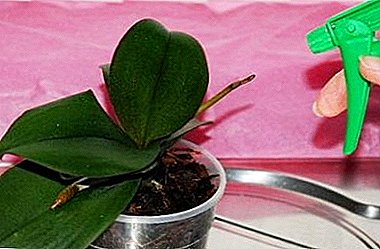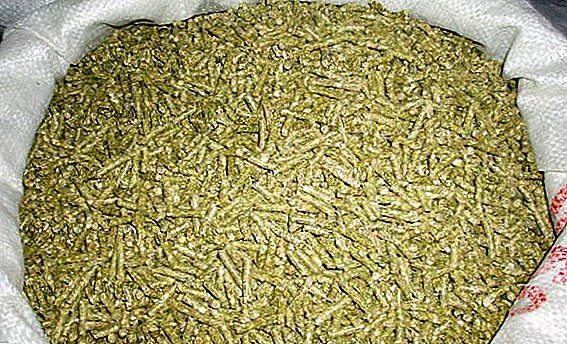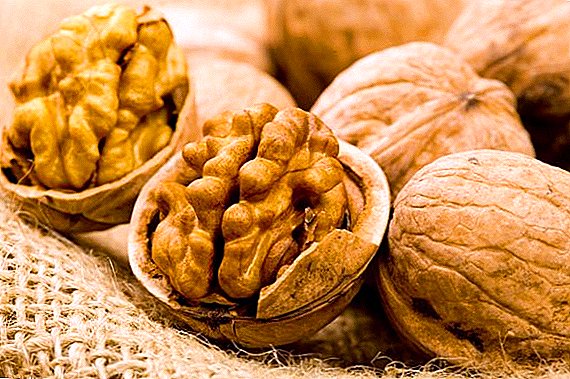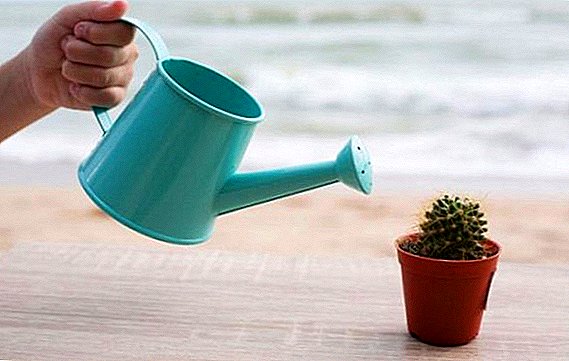 Cacti, because of their natural range of growth, require special treatment of irrigation issues. Many flower lovers wonder: Do cacti water at all? Answering briefly this question, we can say that you should not be zealous with this procedure for these plants, however there are a large number of subtleties, observing which you can save and significantly extend the life of your pet. This article is designed to answer questions about cacti home and how to water them.
Cacti, because of their natural range of growth, require special treatment of irrigation issues. Many flower lovers wonder: Do cacti water at all? Answering briefly this question, we can say that you should not be zealous with this procedure for these plants, however there are a large number of subtleties, observing which you can save and significantly extend the life of your pet. This article is designed to answer questions about cacti home and how to water them.
Principles and methods of irrigation
In general, there are two methods of watering any indoor plants: above and below.  The first implies the habitual moistening of the soil on which the plant grows with the help of a watering can or some other container containing water, and the second often watering into the pan when moisture is placed in the lower part of the pot and is drawn in by the soil as it dries.
The first implies the habitual moistening of the soil on which the plant grows with the help of a watering can or some other container containing water, and the second often watering into the pan when moisture is placed in the lower part of the pot and is drawn in by the soil as it dries.
Did you know? California Cereus is considered the largest cactus in the world. Its height can reach up to 20 meters, age - up to 150 years, and the stem can accumulate up to 2000 liters of water.
It is difficult to say which way is best suited for your plants. Experienced kaktusovody not make a significant difference between these techniques and argue that this is only a matter of taste and experience.
Answering a question about how to water the cacti so that they bloom more often, some gardeners offer the following method: you need to take a drainage tube or a part of the dropper and immerse it in the soil approximately to the middle of the pot.
Watering is done by injecting water from a syringe. However, it should be borne in mind that when using this technique it will be quite difficult to control whether the soil is dry or not. 
Cacti classification
Cacti are a family of plants that belong to the order of Clove. In turn, they are divided into 4 subfamilies.
Among these plants, you can find a variety of plant forms, ranging from low deciduous trees and ending with the usual xerophytes, adapted to long-term arid conditions.
The first subfamily is called Pereskievs and has only one genus of shrubs, on which are located the leaves and stems of non-succulent nature. Scientists believe that this plant is a link in a chain that connects cacti with various hardwoods.
Did you know? In the city of Bunarg, located on the Australian continent, a monument to the Argentine moth, which saved the local livestock industry in its time, has been erected. She restricted the spread of Opuntia cacti, which caused livestock to die.
The Opuntia subfamily includes plants that carry reduced leaves, clearly visible on young shoots, succulent stems, and specific spines called glochidia.  Despite the large number of this subfamily, they are very easily identified by the specific structure of the flowers and the similar morphology of large seeds.
Despite the large number of this subfamily, they are very easily identified by the specific structure of the flowers and the similar morphology of large seeds.
The Mauhia are a subfamily consisting of only one genus, whose habitat is limited to Patagonia. Their morphology resembles the structure of Opuntia, but glochidia are absent.
The cacti also include ripsalis, echinocactus Gruzoni, hymnocalycium, flower Decembrist, hatiora, epiphyllum, opuntia.All remaining species are united in the subfamily Cactus, the distinguishing feature of which is the absence of leaves in any form, as well as the absence of glochidia.
Each of the cacti of any subfamily has a specific root system structure, a feature of which is a very branched structure, which is dormant during soil moisture deficiency, however, if it rains, it can liven up in a few seconds and start storing water in the stem.  For those plants of this group that are large in size, the development of so-called "anchor" roots is characteristic, their purpose being to keep the plant stalks in the soil.
For those plants of this group that are large in size, the development of so-called "anchor" roots is characteristic, their purpose being to keep the plant stalks in the soil.
It is also interesting that the water storage stalk does not nourish the entire root system at the same time during drought, it gives nutrients only to the closest processes, all other parts are, in fact, dead.
Watering plants depending on the time of year
Answering the question of how many times a cactus needs to be watered, it is necessary to take into account a significant number of parameters, including the temperature and humidity of the environment, the intensity of illumination, the type of soil, the type of cactus and the stage of development at which the plant currently resides.
Most of these factors for given plants growing in natural conditions are determined by the time of year. Therefore, it is worthwhile to analyze the irrigation technique in more detail, which is based on the natural cycle of changing seasons. 
In winter
Watering cacti in winter should be done in a moderate mode. Remember that flowering in this type of plant has nothing to do with periods of growth or dormancy, so even if your cactus blossomed at this time of year, it still needs to be watered less often than in summer or spring.
Important! The main guideline that it is time for new watering is drying out the soil. Check not only the surface layer, but also deeper areas, for example, with a pencil.
In the spring
How to water the cactus at home in the spring, you can tell the natural development cycle of these plants. It is known that since the second half of spring, the plant activates the processes of growth and development.
Accordingly, in order to improve the activity of these processes, it is necessary to increase the multiplicity of irrigation. However, it is necessary to take special care not to overremove the soil, as this can cause rotting of the roots. 
Summer
Watering cacti in the summer should be the most intense. At this time of the year, the processes of evaporation of moisture from the soil are most active, so your task is to compensate for the lost water and not let the plant dry out.
In the summertime, you can also apply spraying of the stems, which will have a positive effect on the condition of your indoor pet. This method of moisturizing is also good because the probability of root decay when using it is reduced to zero.
In the autumn
Watering cacti at home in the fall is divided into two stages. In the first half of the autumn period, water should be watered at about the same frequency as in summer.
Starting from the second half of October, the frequency of irrigation should gradually decrease in order to reach its minimum by the beginning of the winter dormant period. 
The frequency of watering depending on the type of cactus, growing conditions and age of the plant
Cacti in nature can be divided into moisture-loving and dry-loving. The first include, for example, zygocactus and ripsalis, and the second - mammillaria.
To help find out what kind of pet your pet belongs to, may be the consultant of the store where you made the purchase.
Plants located in rooms with central heating, high air temperature and a dry room should be watered more abundantly than those that are affected by low temperature and high relative humidity.
Abundant watering also require such plants as lovage, Kobe, arrowroot, hydrangea, indoor lemon, Echinacea purpurea, Chervil, Nigella damask.It is worth less to water the cacti growing in clay soil with high density, and accordingly, more that are planted in the soil with high drainage properties.
 The older your plant, the more developed its root system is - it is more branched and penetrates into the deeper layers of the soil.
The older your plant, the more developed its root system is - it is more branched and penetrates into the deeper layers of the soil.Such plants can absorb moisture much longer from the same pot in volume than those in which the root system has not reached a similar level of development. From this it follows: the older the cactus, the less often it is watered.
Water quality when watering
Water required for irrigation must be at least separated for several days or filtered. Even better if you have the opportunity to collect rain or melt water.
Distilled water is also suitable, but the method of its production is quite expensive, and it is unlikely that you will want to use it as a source of moisture for irrigation. 
Watering and applying liquid fertilizers, their advantages and disadvantages
It should be borne in mind that these succulents require a very small amount of nitrogen-containing fertilizers, and therefore fertilizing with organic substances is not practiced by experienced cacti-growers.
The most convenient for making cacti are liquid fertilizers, while it is desirable to purchase ready-made mixtures for cacti, which you simply need to dilute with water to the desired concentration.
Important! It is worth remembering that for the successful feeding of the cactus, it is not the total high concentration of minerals in the aqueous solution that is important, but their correct relationship with each other.
In fertilizer data plants always works the rule: "It is better to underfeed than overfeed." Among cacti lovers, fertilizer with a nitrogen: phosphorus to calcium ratio of 5: 10: 5 or 20:30:20 is often used to stimulate flowering (the latter is best diluted 4 times).  After flowering, fertilizers are used with equal proportions of minerals 5: 5: 5 or 10:10:10 (it is better to dilute 2 times).
After flowering, fertilizers are used with equal proportions of minerals 5: 5: 5 or 10:10:10 (it is better to dilute 2 times).
Many cacti growers consider such fertilizers to be too concentrated in nitrogen content and recommend the use of fertilizers containing less of it, for example, the “GrowUp” fertilizer with the formula 2.5: 5: 4.
Serious watering errors
The most important and perhaps the only mistake in watering these plants is excessive soil moisture, which can lead to root rot and further plant death. In order to avoid this error, water the cactus only as the soil dries out under it.
Remember also that you can not use tap water for irrigation, because an excess of chlorine and other elements in its composition can cause irreparable damage to the structure of the roots and stems of your room pet.  We hope that our advice helped you answer the question of how often you need to water the cacti at home. Follow the simple rules of watering, given in this article, and the cactus will delight your eyes for many years.
We hope that our advice helped you answer the question of how often you need to water the cacti at home. Follow the simple rules of watering, given in this article, and the cactus will delight your eyes for many years.












